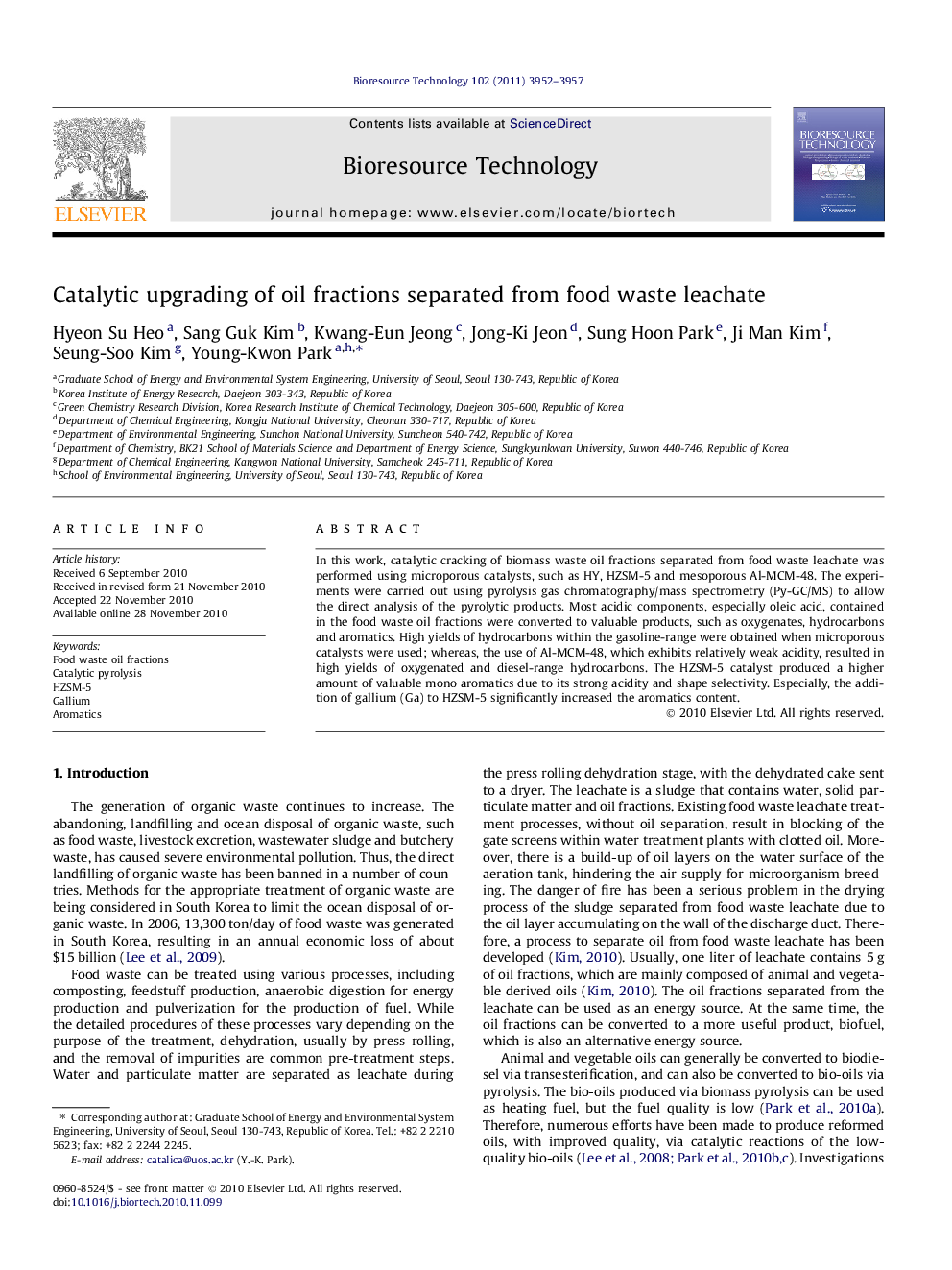| Article ID | Journal | Published Year | Pages | File Type |
|---|---|---|---|---|
| 10395489 | Bioresource Technology | 2011 | 6 Pages |
Abstract
In this work, catalytic cracking of biomass waste oil fractions separated from food waste leachate was performed using microporous catalysts, such as HY, HZSM-5 and mesoporous Al-MCM-48. The experiments were carried out using pyrolysis gas chromatography/mass spectrometry (Py-GC/MS) to allow the direct analysis of the pyrolytic products. Most acidic components, especially oleic acid, contained in the food waste oil fractions were converted to valuable products, such as oxygenates, hydrocarbons and aromatics. High yields of hydrocarbons within the gasoline-range were obtained when microporous catalysts were used; whereas, the use of Al-MCM-48, which exhibits relatively weak acidity, resulted in high yields of oxygenated and diesel-range hydrocarbons. The HZSM-5 catalyst produced a higher amount of valuable mono aromatics due to its strong acidity and shape selectivity. Especially, the addition of gallium (Ga) to HZSM-5 significantly increased the aromatics content.
Related Topics
Physical Sciences and Engineering
Chemical Engineering
Process Chemistry and Technology
Authors
Hyeon Su Heo, Sang Guk Kim, Kwang-Eun Jeong, Jong-Ki Jeon, Sung Hoon Park, Ji Man Kim, Seung-Soo Kim, Young-Kwon Park,
